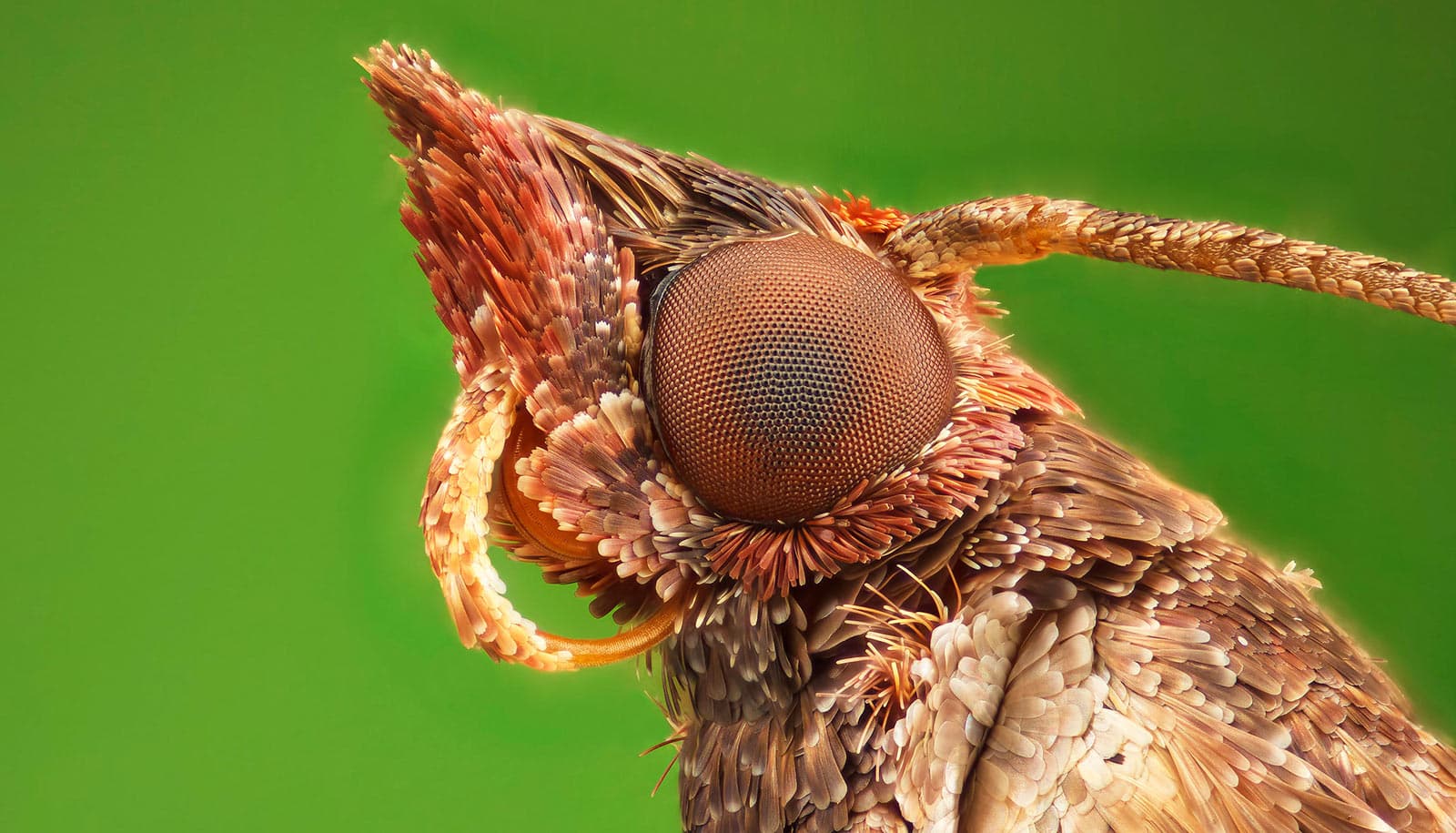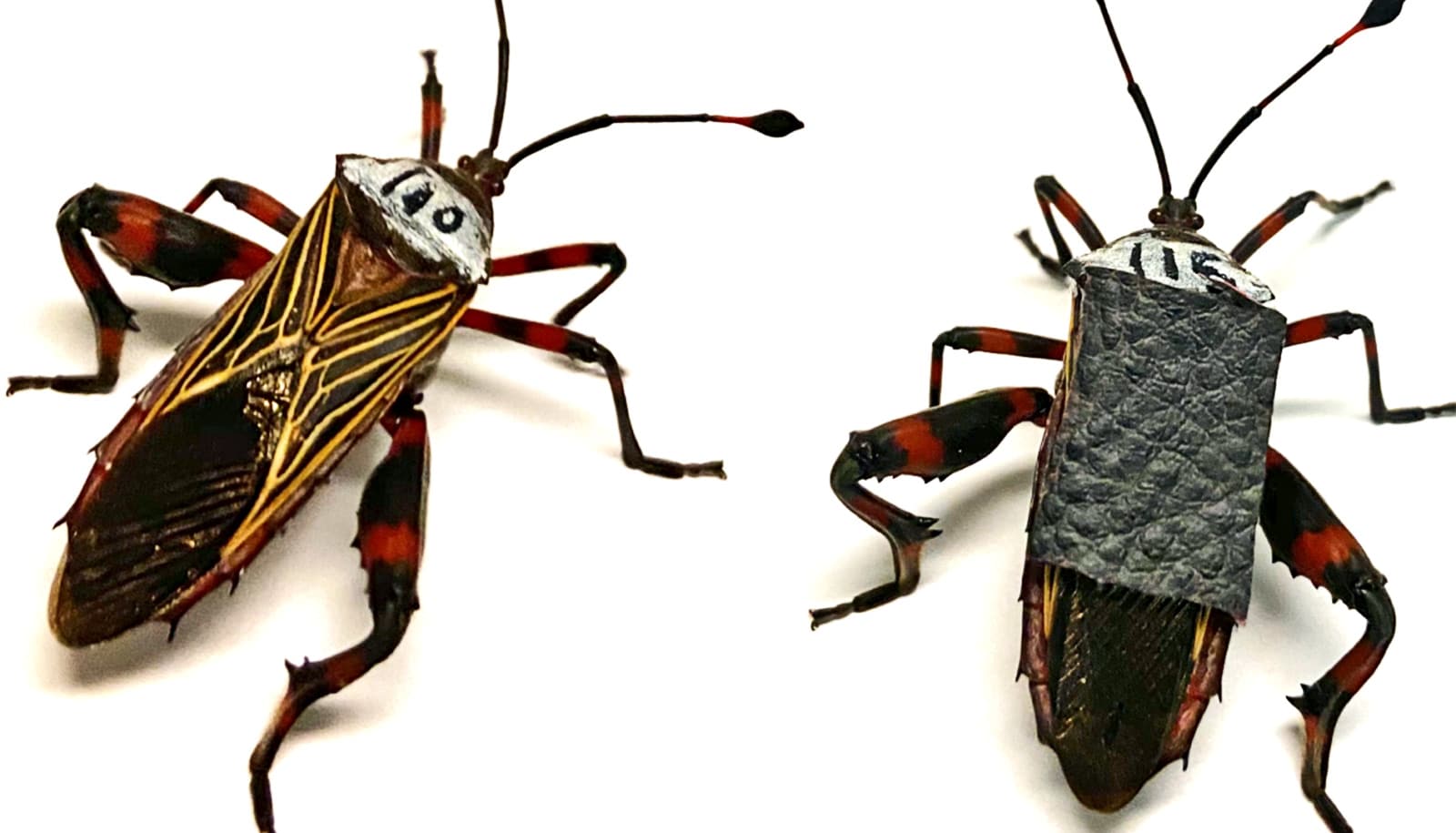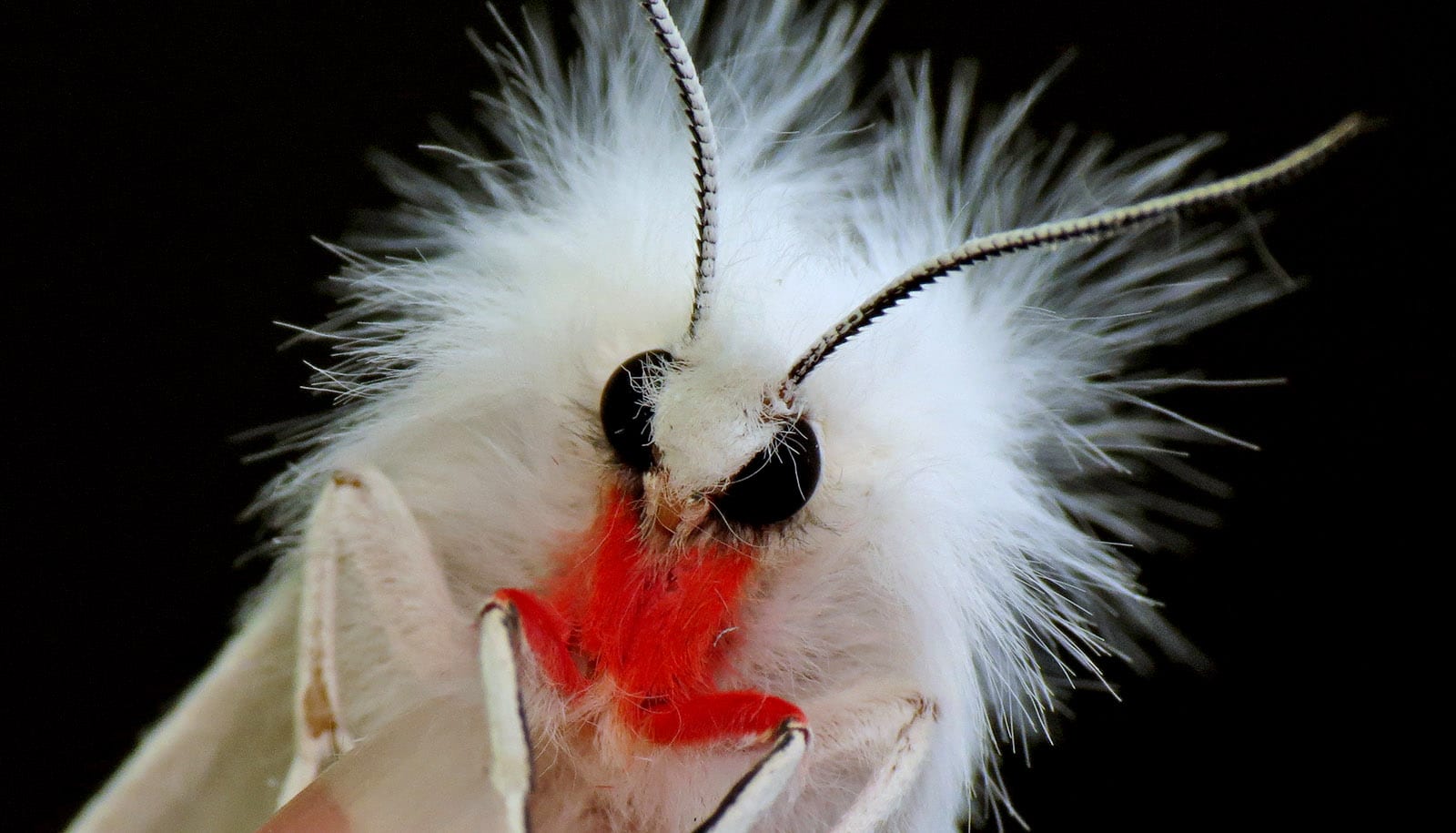
"It's everywhere. Most animals that eat other animals are cannibalistic to some extent, and even those that don't normally eat other animals—like the Indian meal moth—are often cannibalistic," Volker Rudolf says. Above, an Indian meal moth. (Credit: Caramasca/Flickr )
This cannibal shows how selfishness evolves
It's surprisingly easy to turn a common type of moth larvae into a bunch of cannibals. And doing that confirms an evolutionary prediction.
One of nature’s most prolific cannibals shows how social structure affects the evolution of selfish behavior.
Researchers reveal that less selfish behavior evolved under living conditions that forced individuals to interact more frequently with siblings. While they verified the finding insect experiments, Rice University biologist Volker Rudolf says the evolutionary principal could apply to studying any species, including humans.
In a study in the journal Ecology Letters , Rudolf, longtime collaborator Mike Boots of the University of California, Berkeley, and colleagues show they could drive the evolution of cannibalism in Indian meal moth caterpillars with simple changes to their habitats.
“In nature, cannibalism is just getting another meal.”
Also known as weevil moths and pantry moths, Indian meal moths are common pantry pests that lay eggs in cereals, flour, and other packaged foods. As larvae, they’re vegetarian caterpillars with one exception: They sometimes eat one another, including their own broodmates.
In laboratory tests, researchers showed they could predictably increase or decrease rates of cannibalism in Indian meal moths by decreasing how far individuals could roam from one another, and thus increasing the likelihood of “local” interactions between sibling larvae. In habitats where caterpillars were forced to interact more often with siblings, less selfish behavior evolved within 10 generations.
Rudolf, a professor of biosciences at Rice, says increased local interactions stack the deck against the evolution of selfish behaviors like cannibalism.
To understand why, he suggests imagining behaviors can be sorted from least to most selfish.
“At one end of the continuum are altruistic behaviors, where an individual may be giving up its chance to survive or reproduce to increase reproduction of others,” he says. “Cannibalism is at the other extreme. An individual increases its own survival and reproduction by literally consuming its own kind.”
Cannibal families
Rudolf says the study provided a rare experimental test of a key concept in evolutionary theory: As local interactions increase, so does selective pressure against selfish behaviors. That’s the essence of a 2010 theoretical prediction by Rudolf and Boots, the corresponding author of the meal moth study, and Rudolf says the study’s findings uphold the prediction.
“Families that were highly cannibalistic just didn’t do as well in that system,” he says. “Families that were less cannibalistic had much less mortality and produced more offspring.”
In the meal moth experiments, Rudolf says it was fairly easy to ensure that meal moth behavior was influenced by local interactions.
“They live in their food,” he says. “So we varied how sticky it was.”
Fifteen adult females were placed in several enclosures to lay eggs. The moths lay eggs in food, and larval caterpillars eat and live inside the food until they pupate. Food was plentiful in all enclosures, but it varied in stickiness.
“Because they’re laying eggs in clusters, they’re more likely to stay in these little family groups in the stickier foods that limit how fast they can move,” Rudolf says. “It forced more local interactions, which, in our system, meant more interactions with siblings. That’s really what we think was driving this change in cannibalism.”
Rudolf says the same evolutionary principal might also apply to the study of human behavior.
“In societies or cultures that live in big family groups among close relatives, for example, you might expect to see less selfish behavior, on average, than in societies or cultures where people are more isolated from their families and more likely to be surrounded by strangers because they have to move often for jobs or other reasons,” he says.
‘It’s everywhere’
Rudolf has studied the ecological and evolutionary impacts of cannibalism for nearly 20 years. He finds it fascinating, partly because it was misunderstood and understudied for decades. Generations of biologists had such a strong aversion to human cannibalism that they wrote off the behavior in all species as a “freak of nature,” he says.
That finally began to change slowly a few decades ago, and cannibalism has now been documented in well over 1,000 species and is believed to occur in many more.
“It’s everywhere. Most animals that eat other animals are cannibalistic to some extent, and even those that don’t normally eat other animals—like the Indian meal moth—are often cannibalistic,” Rudolf says. “There’s no morality attached to it. That’s just a human perspective. In nature, cannibalism is just getting another meal.”
But cannibalism “has important ecological consequences,” Rudolf says. “It determines dynamics of populations and communities, species coexistence, and even entire ecosystems. It’s definitely understudied for its importance.”
He says the experimental follow-up to his and Boots’ 2010 theory paper came about almost by chance. Rudolf saw an epidemiological study Boots published a few years later and realized the same experimental setup could be used to test their prediction.
While the moth study showed that “limiting dispersal,” and thus increasing local interactions, can push against the evolution of cannibalism by increasing the cost of extreme selfishness, Rudolf says the evolutionary push can probably go the other way as well. “If food conditions are poor, cannibalism provides additional benefits, which could push for more selfish behavior.”
He says it’s also possible that a third factor, kin recognition, could also provide an evolutionary push.
“If you’re really good at recognizing kin, that limits the cost of cannibalism,” he says. “If you recognize kin and avoid eating them, you can afford to be a lot more cannibalistic in a mixed population, which can have evolutionary benefits.”
Rudolf says he plans to explore the three-way interaction among cannibalism, dispersal, and kin recognition in future studies.
“It would be nice to get a better understanding of the driving forces and be able to explain more of the variation that we see,” he says. “Like, why are some species extremely cannibalistic? And even within the same species, why are some populations far more cannibalistic than others. I don’t think it’s going to be one single answer. But are there some basic principles that we can work out and test? Is it super-specific to every system, or are there more general rules?”
Additional coauthors are from the University of Sheffield and the Centre for Environment, Fisheries, and Aquaculture Science in Weymouth, England.
Funding for the work came from the National Science Foundation, the National Institutes of Health, and the Natural Environment Research Council.
Source: Rice University
The post This cannibal shows how selfishness evolves appeared first on Futurity .
Share this article:
This article uses material from the Futurity article, and is licenced under a CC BY-SA 4.0 International License. Images, videos and audio are available under their respective licenses.


